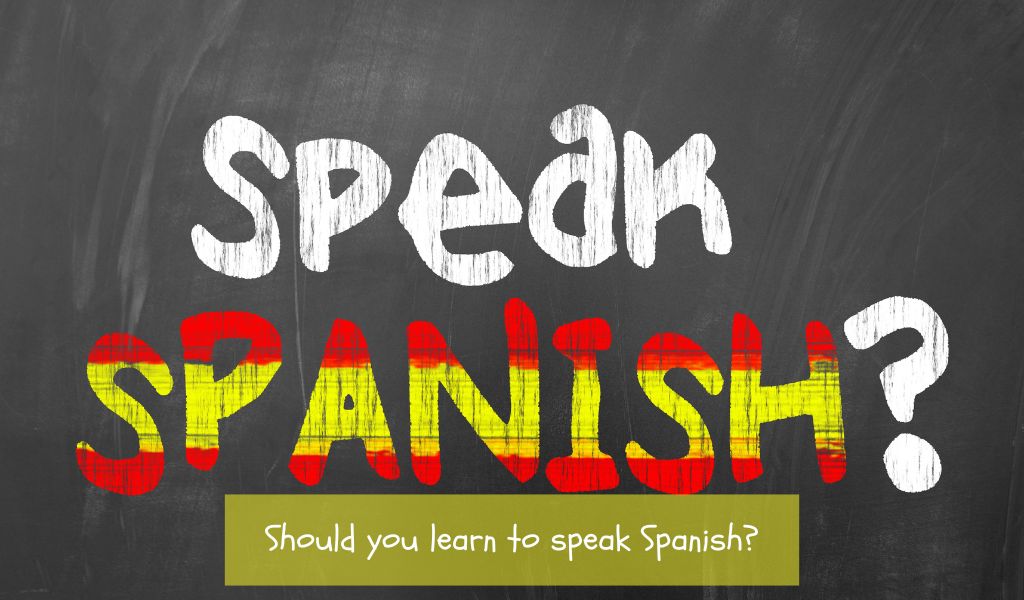Many students around the world are interested in learning Spanish, as it is one of the most widely spoken languages.
But before deciding to learn this language, it is important to consider whether or not it will be difficult.
In this article, we will explore this question in detail and provide an overview of Spanish grammar and vocabulary so that you can make an informed decision about whether or not Spanish is a suitable language to learn.
The Difficulty of Learning Spanish
When it comes to learning languages, the difficulty can vary depending on individual abilities and experience.
Generally speaking, however, Spanish is considered one of the easier languages for English speakers to learn due to its similar alphabet and pronunciation rules.
The grammar can be challenging, but it is not as complicated as other languages such as German or Chinese.
Spanish is one of the most valuable of all languages to learn if you are an English speaker. With a combination of Spanish and English you will be able to converse with most of the global population.
Spanish Grammar and Vocabulary
The Spanish language has a few simple rules of grammar that make it relatively easy for English speakers to understand.
For example, nouns are either masculine or feminine and adjectives must match the gender of the noun they are describing.
Verbs also change depending on whether the subject is singular or plural, but there are only three tenses to learn (present, past, future).
In addition, pronunciation in Spanish is quite straightforward; most words are pronounced exactly as they appear when written down.
When it comes to vocabulary, Spanish does have a large number of words – many of which are derived from Latin or Arabic.
However, many of these words have similar meanings to their English counterparts, which makes them easier for English speakers to learn and remember.
The popularity of Spanish as a second language
Spanish is a popular language to learn as a second language, with over 400 million speakers worldwide.
It is the official language of twenty-one countries and is also spoken in some parts of the United States.
As well as being an important language for international business, Spanish can open doors to many job opportunities in Latin America, Europe, and beyond.
It is a great choice for those looking to expand their career options or simply explore the culture of different countries.

The Difficulty of Spanish for English Speakers
Overall, Spanish is a relatively easy language for English speakers to learn due to its familiar alphabet, pronunciation rules, and grammar.
The large vocabulary may seem daunting at first, but many of the words are similar enough that they can easily be remembered.
With dedication and practice, it is possible to become fluent in Spanish within a few months or even weeks.
Learning Spanish also provides a great opportunity for students looking to explore different cultures and make new connections around the world.
Whether you’re planning on travelling abroad or just want to brush up your skills for personal use – learning Spanish is an excellent choice.
Explanation of Spanish grammar complexities
Although Spanish grammar is relatively simple compared to other languages, there are some complexities that need to be understood before it can be properly mastered.
For example, verb conjugations can vary depending on the tense and the subject of the sentence; for instance, past-tense verbs in Spanish end with -ó instead of -ed.
There are also many irregularities in spellings, as well as differences between European and Latin American Spanish.
Overall, Spanish grammar may take more time to learn than other languages due to its complex rules and exceptions.
However, with enough practice and dedication, students should find that they quickly become comfortable with these complexities over time.
Learn to Speak Spanish
Speak Spanish Fast
Start speaking Spanish quickly and with confidence
- Learn at your own pace
- Bite sized learning
- Build confidence and ability quickly
- Start speaking right away
Comparison of English and Spanish grammar
In comparison to English grammar, Spanish is much simpler and more straightforward.
There are three verb tenses instead of the four found in English – present, past, and future. In addition, nouns are either masculine or feminine and adjectives must match the gender of the noun they’re describing.
However, one area where Spanish grammar is often considered more difficult than English is verb conjugations.
While verbs in English generally remain unchanged regardless of the subject or tense of a sentence, Spanish verbs can change depending on who or what it’s referring to.
This means that students must learn dozens of different verb forms for each verb to become fluent in the language.
Challenges faced by English speakers learning Spanish
English speakers often find that the biggest challenge when learning Spanish is mastering all of the verb conjugations.
Although this can be difficult to learn at first, with enough practice and dedication students should find that it becomes easier over time.
In addition, English speakers may have difficulty understanding certain words or expressions in Spanish that are not used in their native language.
As with any new language, it’s important for students to listen closely and not be afraid to ask questions if something isn’t clear.
With a positive attitude and persistence, even those who find themselves struggling should eventually see progress in their language skills.
The Advantages of Spanish for English Speakers
Overall, Spanish is an accessible language for English speakers to learn due to its familiar alphabet, pronunciation rules and simple grammar.
In addition, learning Spanish can provide students with a great opportunity to explore different cultures and make new connections around the world. With dedication and practice, it is possible for even those who are struggling to become fluent in the language.
For these reasons, Spanish is an excellent choice for those looking to improve their career options or simply broaden their horizons.
Wide usage and popularity of Spanish around the world
Spanish is one of the world’s most widely spoken languages and is used in many countries across Europe, Latin America, Africa and Asia.
In addition to being extensively studied as a foreign language in many schools, it is also an official language of the United Nations and the European Union.
As a result, Spanish is becoming increasingly popular among people who want to develop their international communication skills or explore different cultures.
Importance of Spanish as a useful tool for travel and business
Spanish is a valuable tool for both travel and business. For travelers, learning Spanish can unlock new opportunities to explore and appreciate the countries they visit.
In addition, having knowledge of Spanish can be beneficial when doing business in a country where it is spoken, as this will help build better relationships between individuals from different cultures.
The Importance of Practice and Immersion
Ultimately, the key to mastering Spanish is practice and immersion.
Regularly speaking, writing and listening to the language will help improve pronunciation, grammar and building up vocabulary.
In addition, taking classes or even joining a conversational Spanish group can also be beneficial as it gives students an opportunity to use their skills in a real-life setting.
With adequate study and exposure, students should find that they become more confident when using the language over time.
What’s the key to learning Spanish?
The key to learning Spanish is dedication and practice.
Students must be willing to put in the time and effort required to gain proficiency in the language, as well as having a positive attitude towards their learning journey.
With enough persistence and determination, even those who find themselves struggling should eventually see progress in their language skills.
By taking advantage of all available resources – such as classes, online courses or tutors – learning Spanish can become an enjoyable experience that benefits students for years to come.
Methods for practicing and immersing oneself in Spanish
There are a variety of ways for students to practice and immerse themselves in Spanish.
In addition to taking classes, students can also use online tools such as podcasts, books, apps and websites to help supplement their learning.
Immersing oneself in Spanish culture is important too; listening to music in Spanish, watching films or television shows with Spanish subtitles and talking with native speakers will all give students an opportunity to use the language in a more natural setting.
With dedication and persistence, anyone can learn Spanish – regardless of their age or background.
The benefits of practice and immersion
The benefits of practice and immersion are vast. In addition to improving language skills, students will also be able to experience different cultures in a much deeper way.
Learning Spanish opens up the door to new opportunities for travel, work and even making lifelong friendships with people from around the world.
For anyone looking to take their language learning journey further, Spanish is an excellent choice that is sure to provide plenty of rewards along the way.
Conclusion
To conclude, Spanish is a language with many benefits for those looking to broaden their horizons.
With the right resources and dedication, anyone can find success in learning this language.
Taking classes or joining conversational groups are great ways for students to get started on their journey, while practice and immersion will help them achieve proficiency over time.
Learning Spanish unlocks numerous opportunities that are sure to benefit students for years to come.


